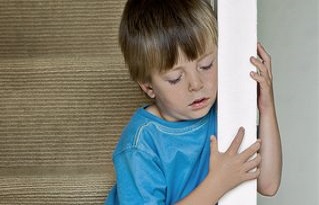The adoptive family is a system built upon “necessary losses.” Experiences of separation and loss are fundamental to all members of the adoption triad.
The child has lost his or her original bond with birth mother and early attachment to birth parents or other caregivers (e.g., grandparents, foster parents). Despite neglectful or abusive care for some, there is still a sense of loss when the child is separated from his or her birth parents. There is often a loss of self-worth and self-identity for the child, who wonders “Why did they give me up?” Separation from siblings, extended kin, friends, and teachers is also common.
Birth parents have lost a biological child, and may experience feelings of inadequacy, failure, damaged self-esteem, and a sense of loss of control over their lives. Many birth parents suffer unresolved losses stemming from their own early years, which has both contributed to and exacerbated current losses. Adoptive parents struggle with a variety of losses. Many have dealt with the pain of infertility for years: feeling of inadequacy, strain on the marriage,
lack of understanding and support from extended family, lost fantasy of a biological child. Despite popular belief, adoption often does not “fix” the pain of infertility, and feelings of loss may continue for years. Adoptive parents also
have feelings of loss associated with miscarriage, death, lack of control over their own bodies and events, and the difference between the fantasy of the child they planned to adopt and the reality of the child who entered their family.
A child’s reaction to separation and loss is determined by two major factors: the nature and quality of the attachments being disrupted, and the abruptness of the separation. The stronger the prior relationships, the more
traumatic the loss. The more abrupt the transition, the more difficult it is to work through the loss. Additional factors influence a child’s reaction to loss of an attachment figure:
• age and developmental stage
• attachment to birth parents/caregivers
• prior separation experiences
• child’s perception and interpretation of events
• preparation for transition
• parting and welcoming messages received
• child’s temperament and genetics
• environment child is leaving and moving to.
Infants can feel the effects of separation and loss associated with a disruption of the maternal bond, inadequate early care, and multiple moves. It is between the ages of 6 months to 3 years, however, that the loss of attachment figures
can cause the most emotional harm. Loss at these stages of development may result in a lack of trust in caregivers, and problems with autonomy, dependence, identity formation, and social adjustment.
Children commonly react to loss with regression of recently acquired skills. The toddler, for example, may display regressive eating, sleeping, or elimination behaviors. Important developmental tasks may not be accomplished when the child is preoccupied with feelings of loss. The child with multiple moves, for instance, may show little reaction to another separation, as a defense against emotional pain. This child can lag behind developmentally, be less likely to form subsequent attachments, and is more likely to act out in ways that lead to additional moves. Studies show that children with attachment disorder have numerous moves in the foster care system as a result of violence and aggression. Grief is a natural reaction to the loss of an attachment figure. Children who have experienced early attachment failures and disruptions are struggling with, or stuck at some point in, the grieving process. Children typically go through three stages when they are separated from attachment figures: protest, despair, and detachment. The child who feels despair is preoccupied and depressed, but can still grieve for his or her unavailable caregiver. The detached child, however, has “shut down” emotionally and has not completed the grieving process. Children in this latter category are routinely moved from institutions and foster homes to adoptive families, but find it difficult to trust, accept love, and truly “belong” to the family.
Children with attachment disorder are grieving losses, or defending against those losses and the accompanying emotional pain. It is important that child welfare and mental health professionals, as well as adoptive parents, understand the nature and depth of their grief. Children who are withdrawn, emotionally detached, and unwilling to connect with caregivers may be demonstrating a reaction to loss and grief. Adoptive parents must be taught to be proactive, not reactive. For example, not withdraw from the reticent child, but rather, provide support, patience, empathy, and appropriate guidance.
Adoptive parents who are unresolved in their own grief process will be limited in their ability to help their child through his or her own losses and grief. Parents need to “look in the mirror” before helping their children. Honest and open communication is often helpful, creating an “empathic bridge” between parent and child. Children feel hopeful and more trusting when they are understood.


